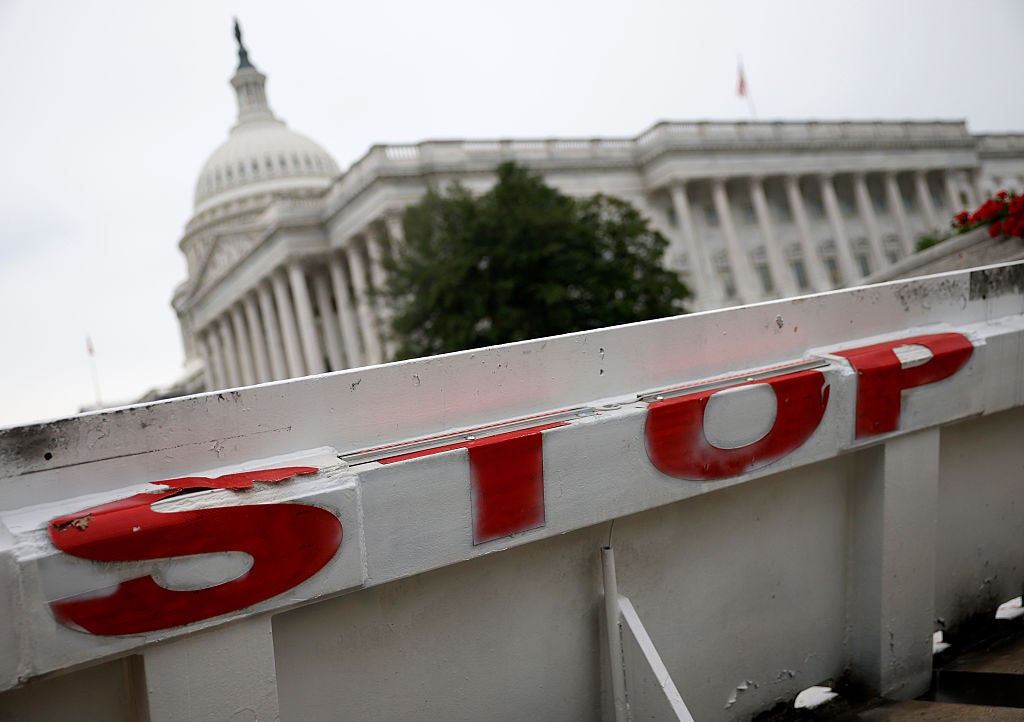Kevin Dietsch / Getty Images
Key takeaways
- The National Flood Insurance Program (NFIP) cannot issue new flood insurance policies during a government shutdown.
- Existing NFIP policies remain valid if issued on or before September 30, 2025 and paid within the 30-day grace period.
- Policy changes, cancellations and endorsements are paused until federal funding resumes.
- Private flood insurance remains fully operational and, where available, can offer continuity when NFIP pauses.
More than 4.7 million homeowners depend on the National Flood Insurance Program (NFIP) for financial protection against flooding, covering roughly $1.3 trillion in property value. But when the government shuts down, what happens to this coverage? With an average of just under 400,000 NFIP policies potentially renewing each month — and with a month of hurricane season left to go — affected homeowners may see their renewals delayed or their ability to change or cancel their policies paused.
The risk doesn’t stop with current NFIP policyholders. Homebuyers closing on homes in flood-prone areas could see their deals stall if lenders can’t confirm active flood insurance, a common requirement before finalizing sales. With 20 funding gaps since the 1970s, the NFIP’s fragility is a risk that every homeowner should keep on their radar.
The NFIP freeze: What stops and what stays
NFIP operates under the Federal Emergency Management Agency (FEMA) and depends on congressional funding authority. During a shutdown, the program loses the power to issue new policies or process changes.
Here’s what typically happens:
- New NFIP policies can’t be issued.
- Renewals and policy changes are frozen until the shutdown ends.
- Previously issued policies (even those with effective dates after October 1, 2025) remain valid if the premium is paid on time.
- Home closings in flood zones can stall because most lenders require proof of active flood insurance.
- The NFIP’s borrowing authority is reduced from $30.425 billion to $1 billion.
Although the federal government backs NFIP policies, private home insurance companies handle the servicing. Renewals usually go out 45 to 60 days before the policy’s effective date, so homeowners with October or November renewals have probably already received their updated flood policies — some with coverage starting as late as November 30. As long as payments are made within the 30-day grace period, those policies will renew as usual.
But for anyone trying to buy a new policy or make changes to an existing one, the system is on hold until the government reopens.
Shutdowns ripple through the housing market
The 2018-2019 shutdown lasted 35 days — the longest in history — and disrupted thousands of home transactions that depend on NFIP coverage. Even shorter shutdowns, like the 16-day lapse in 2013, delayed closings and left flood-zone buyers in limbo.
In a letter to lawmakers, industry groups warned Congress that the NFIP lapse could threaten “1,300 property sales each day.”
Bankrate’s take
The Federal Deposit Insurance Corporation (FDIC) has temporarily waived the flood insurance requirement for new home sales during the government shutdown, though the requirement resumes once federal operations reopen. However, a waiver doesn’t stop flooding — it only removes protection. If a storm hits before coverage starts, homeowners are responsible for all repair costs.
This additional risk is not something many lenders are willing to take on, which can leave potential homeowners at a standstill despite the waiver.
“Conforming loans — ones that meet requirements set by the Federal Housing Finance Agency (FHFA) — are bought by government-sponsored enterprises Fannie Mae and Freddie Mac and are sold on the secondary mortgage market,” says Andrew Dehan, Bankrate mortgage expert. “One of their requirements is that homes in flood-prone areas have flood insurance. If flood insurance isn’t available or is cost-prohibitive, it’s likely lenders won’t approve these mortgages. This is especially a problem since conforming loans are the most common mortgages available.”
These funding standoffs highlight a key risk: when federal programs depend on appropriations, any delay in Washington can trickle down to your finances at home.
Can private flood insurance fill the NFIP gap?
Private flood insurance has started making waves in the insurance industry and may be a worthwhile alternative for some homeowners. Between 2020 and 2024, the number of private flood policies has more than doubled, growing from about 277,00 to 569,000 policies.
Still, only about 4 percent of homeowners have flood insurance at all. This is due in part to limited availability and cost.
Historically, private flood insurance was known to be cost prohibitive, but Sean Harper, Kin Insurance CEO and founder, says that’s changing. “In lower-risk areas, private flood is still often cheaper, and most losses actually happen to people outside mapped flood zones,” he says.
Private flood insurance remains unaffected by the shutdown and can often be issued with little to no grace period in areas where available. Some carriers worth considering include:
However, availability and affordability are two different things. If your home is in or near a Special Flood Hazard Area (SFHA), private coverage may be unavailable or more expensive than an NFIP policy.
According to FEMA data from July 2025, the national average cost of an NFIP policy is $926, but rates vary widely. In Belair, Florida, for example, the median NFIP premium is $3,437 — far higher than the $894 state median.
What homeowners should do now
If you have an NFIP policy, here’s how to keep your protection steady during a shutdown:
- Check your policy’s issuance and payment dates. If your NFIP renewal was issued before the shutdown, pay before the due date to maintain your coverage.
- Avoid making changes for now. Endorsements and cancellations are not being processed right now.
- Keep documentation. Save your renewal notice, proof of payment and any email confirmation.
- Stay updated on FEMA announcements. NFIP typically resumes operations immediately once Congress passes a budget.
- Consult an insurance professional. An agent who understands both markets can help you find coverage that fits your risk zone, but keep in mind that it may not fit your budget.
A July 2025 First Street report shows that 13 million high-risk properties are underinsured or uninsured, including 10 million outside of FEMA’s special flood hazard area. Even if your lender doesn’t require coverage, securing a policy can help protect your investment from future flood damage.
According to Harper, even just getting a quote for flood coverage is a step in the right direction.
“You might learn your house isn’t that risky, and you can cheaply insure against unlikely but severe outcomes. Or you might learn it’s riskier than you thought. If the quote is, say, $3,000 a year, you’re essentially deciding whether to self-insure that risk. At least you’re informed. Prices themselves contain information about risk — use that signal to make a conscious choice.”
— Sean Harper, CEO and Founder, Kin Insurance
Bottom line
A government shutdown may be temporary, but flood exposure isn’t. Knowing your coverage dates, paying on time and exploring private options can help keep your home and finances protected, even when Washington isn’t open for business.
Why we ask for feedback
Your feedback helps us improve our content and services. It takes less than a minute to
complete.
Your responses are anonymous and will only be used for improving our website.
Help us improve our content
Read the full article here
















